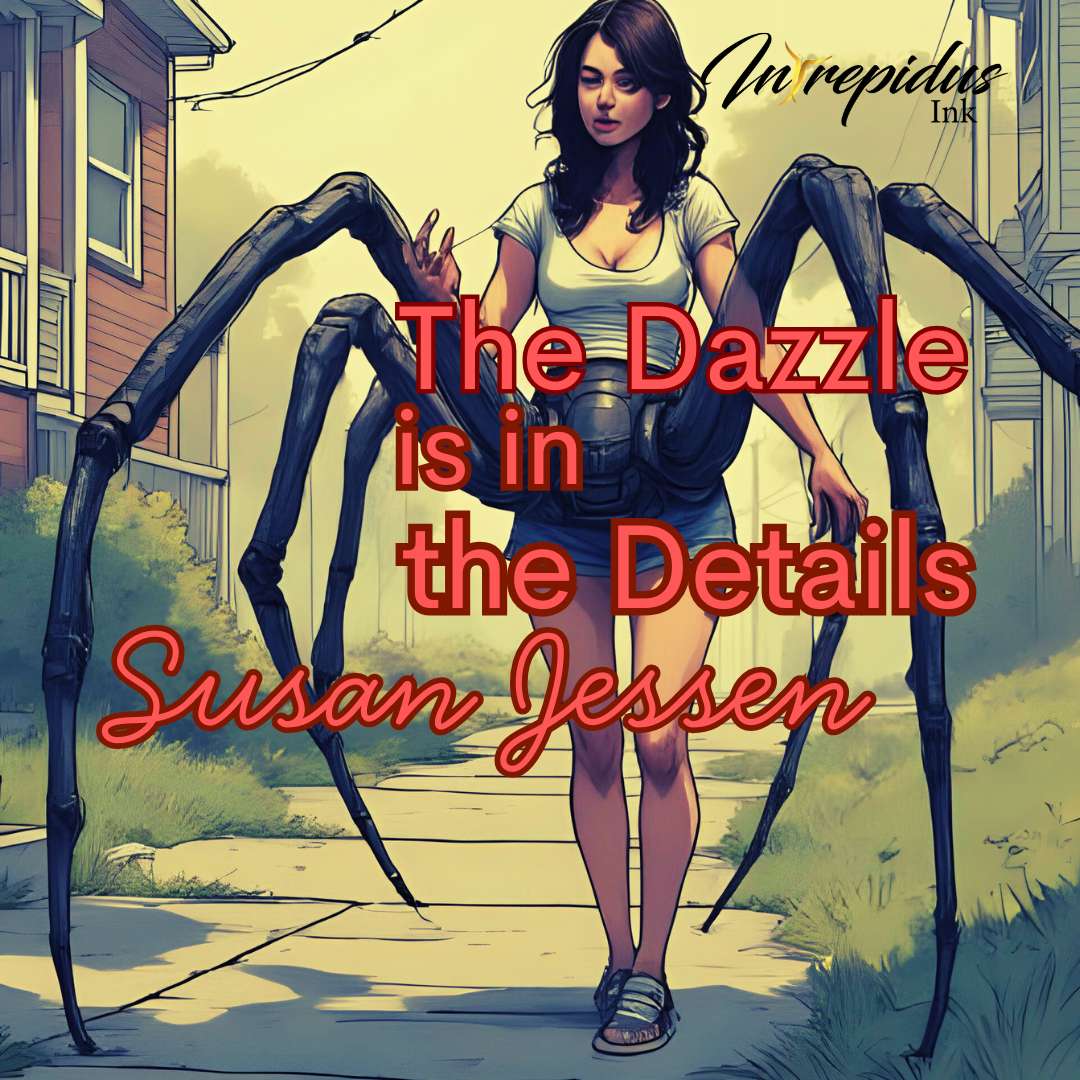
During a recent museum trip, I discovered how dazzling details make Takashi Murakami’s artwork magical. But you don’t have to incorporate a tiny self-portrait and a prized pet, like Murakami did in his painting Tan Tan Bo, aka Gerotan: Scorched by the Blaze in the Purgatory of Knowledge, into your own work to make it memorable. A few fabulous details can provide characterization, turn a bland world brilliant, and enrapture readers.
CHARACTERIZATION DETAILS
In her story “Mother, Shift, Mother,” A. Katherine Black uses vivid details to describe the protagonist’s transformation from human to arachnid. I’ve paraphrased some of them below.
Thick patches shield her vulnerable skin. Claws click and scratch. Ears twitch. She perches on furniture, stares at walls, and smooths her whiskers. Spidery legs erupt from her torso and extend. With her multitude of eyes, she sees everything. The barbs on her legs bend as she spins silk and weaves webs.
Black goes further to show the protagonist’s state of mind and adds relatability. “The web is imbalanced. Hap-hazard. Too sticky in some places, too thin in others. It’s the best I can do.” While I’ve never shifted into a spider, I am well acquainted with imperfection, and I admire the way the protagonist makes peace with hers.
Using generalities to describe a character can be problematic because such words mean different things to different people. Words like “pretty” and “handsome” are subjective.
Specificity, however, resonates with readers and can turn a flat character into a fully fleshed one.
Because of the details Black uses, I imagine the protagonist in motion, creepily perched on her daughter’s desk. I feel her fear, her need to create a connection, and the courage needed to sever the silk.
SETTING DETAILS
Black uses description to show the daughter thriving and the protagonist unraveling.
“Twinkle lights strung under the bunk, new posters on the walls, half-eaten snacks on the shelf.”
“I ignore the scent of rain outside. Ignore the strobe of the TV and the drone of passing vehicles. Ignore everything but the threads. I wait for them to speak…The emptiness cackles.”
Setting details create tension, atmosphere, and mood while grounding the reader. The daughter has replaced her posters with new ones, displaying change, while the twinkle lights hint at optimism and whimsy. Meanwhile, the protagonist is hyper-focused to the point of obsession.
OTHER DETAILS
“I…send a cute meme, link to an op-ed, and wait.” This small snippet implies much about the strength of the protagonist’s relationship with her daughter and the depths of their communication. The last two words signify trust that the daughter will respond. Since the mother/daughter relationship is the heart of the story and crucial to the mother’s character arc, such small details do heavy lifting.
Consider looking for opportunities to add details and go deeper, especially at significant sections of the story, e.g., at high emotion, tension, or shift moments. Make sure each detail enhances the story rather than distracts. Think substance over filler.
REPLACING VAGUE WORDS
I suggest replacing vague words like “it,” “this,” and “that” with more specific words where possible. Using specific words creates clarity, particularly when several appear in the same sentence. Specificity can also enhance voice and give the story texture.
TAKEAWAY
Revisit your favorite stories and works of art and see how the dazzle is in the details. Look for opportunities to use specificity to make your wonderful words shine even brighter by deepening characterization, world building, and enhancing key story moments. Evaluate vague words and consider replacing them with more specific words. Focus on adding substance that enhances the story rather than filler.

Author Bio
Susan Jessen is an Acquisition Editor at Rock and a Hard Place Magazine and provides editorial feedback during Flash Fiction Magazine’s quarterly contests. Her stories have been published under a pseudonym in various anthologies and magazines.

